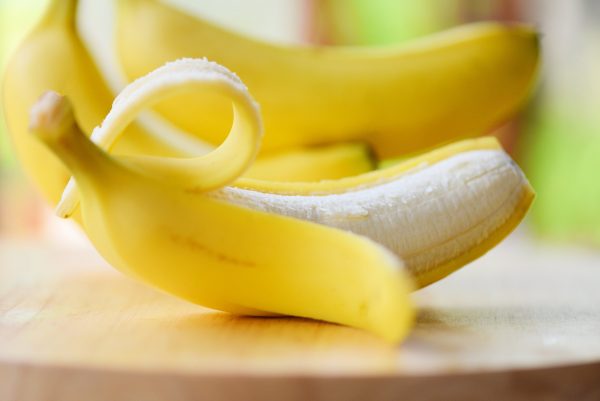Q: There’s a sticker on my medicine bottle that says, “It may be advisable to drink a full glass of orange juice or eat a banana daily while taking this medication.” Why do I need bananas or orange juice?
Pharmacists add that sticker to medicines containing “water pills”, or diuretics. Diuretics are called “water pills” because they remove fluid from your lungs, hands and feet, making you need to urinate right after you take them and often for hours afterward.
Along with the water you lose from taking a “water pill”, you can lose important minerals like sodium, magnesium and potassium. Potassium is critically important in balancing your heart’s electrical activity. Bananas and orange juice are good sources of potassium, so that sticker reminds you to get plenty of potassium every day to help replace what you may be losing from your medicine.
Potassium supplements are described either by weight in milligrams (mg) or chemically by milliequivalents (mEq). Most prescription forms of potassium are labeled as mEq and are available as either 10mEq or 20mEq tablets.
Unfortunately, most prescription potassium pills are large and can be hard to swallow, leading some folks try non-prescription versions instead. One common non-prescription form is 595mg of potassium gluconate. This sounds like a lot, but actually contains only 99 mg of elemental potassium in each tablet, the other 496mg being the gluconate part.
How does 99mg of non-prescription potassium compare to the prescription strength of 10mEq of potassium? In each mEq, there is 40mg of potassium, whether it comes as potassium chloride or potassium gluconate. A potassium gluconate tablet with 99mg of potassium has 2.5mEq. You’ll need to take 4 tablets of non-prescription potassium gluconate to match the potassium in one prescription-only tablet of 10mEq potassium chloride.
How much potassium can you get in drinking an 8-ounce glass of orange juice or eating a banana every day?
The average American gets 2640mg of potassium in their diet. To prevent high blood pressure and bone loss, however, the Institute of Medicine recommends 4700mg every day, nearly twice that amount.
Eating a medium-sized banana gives you 422mg of potassium and an 8-ounce glass of orange juice contains 473mg of potassium. One potato with the skin has 610mg of potassium, and a sweet potato has even more: 694mg.
Leafy green vegetables and foods that grow on vines are particularly good sources of potassium, as are milk and yogurt. Tomatoes are also a great source of potassium. More information on potassium content of foods is available in the online resource Dietary Guidelines for Americans 2015-2020, at http://www.health.gov/dietaryguidelines.
What if eating bananas and drinking orange and tomato juice isn’t working for you? You’re not alone. The potassium found in foods doesn’t work as well as straight potassium chloride when correcting low potassium levels from taking a diuretic.
One easy and inexpensive way to get more potassium chloride in your diet is to use a salt substitute. Salt substitutes such as Nu Salt® or Morton Salt Substitute® are sodium-free, using potassium chloride crystals instead of sodium chloride crystals. There are also low-sodium salt substitutes like Morton’s Lite Salt, with a 50-50 ratio of sodium to potassium chloride.
Both sodium-free or low sodium salt substitutes are particularly concentrated sources of potassium. Switching from using table salt (sodium chloride) to a salt substitute with potassium chloride can dramatically increase your potassium intake.
People with kidney disease or getting dialysis cannot easily remove potassium from their bodies and should avoid using salt substitutes completely. But for the rest of us, switching to a salt substitute is one of the least expensive ways to get more potassium.
Here Are 4 tips On Getting Enough Potassium:
- Salt substitutes are potent sources of potassium.
Nu-Salt® has 795mg potassium in each ¼ teaspoon. That’s 20mEq of potassium, more than many prescription-strength potassium tablets. Morton Salt Substitute® has 610 mg of potassium per ¼ teaspoonful, or 15mEq of potassium.
- Avoid using salt substitutes if you have kidney problems.
If you take certain heart medicines like lisinopril, losartan or spironolactone, or if you already take a potassium supplement, talk to your doctor first about whether a sodium-free or low-sodium salt substitute would be safe for you.
- You don’t have to binge on bananas.
Bananas are not the only food that can boost your potassium. Try sweet potatoes, white potatoes, or 8 ounces of either low-fat or non-fat yogurt, which have even more potassium than a banana.
- Low-sodium V-8 has nearly twice the potassium that orange juice has. You’ll get more potassium drinking tomato juice or V-8 juice than orange juice, too.


